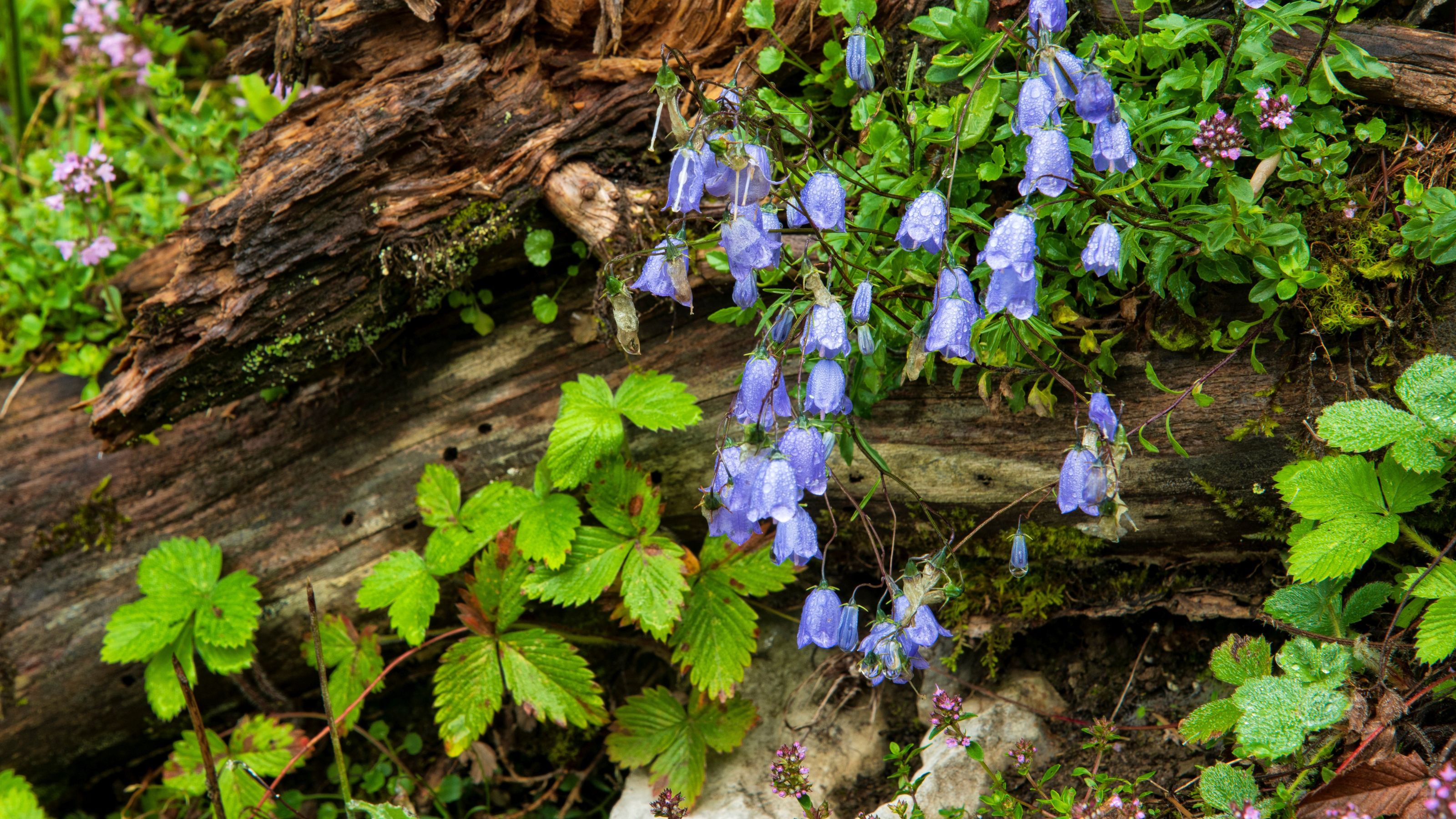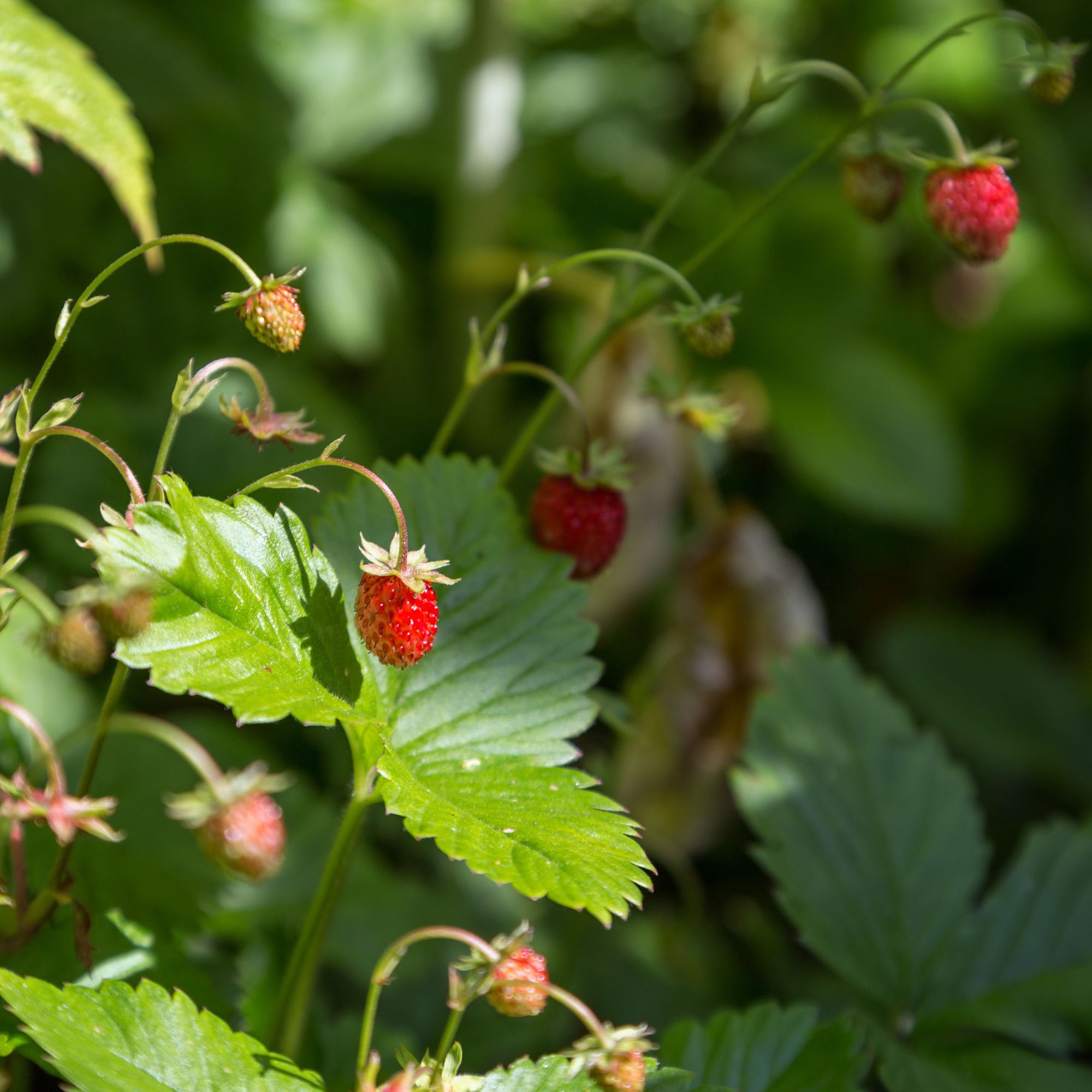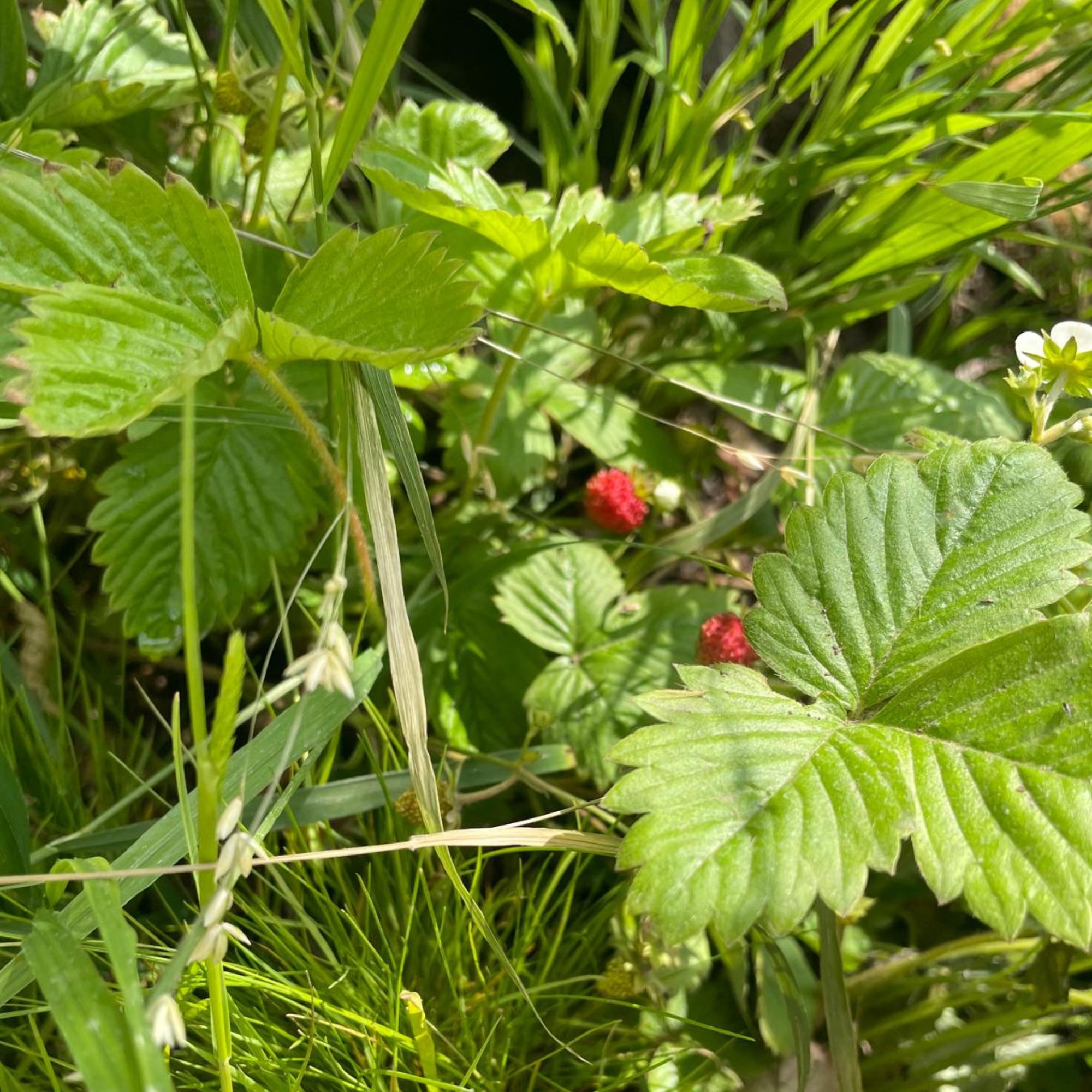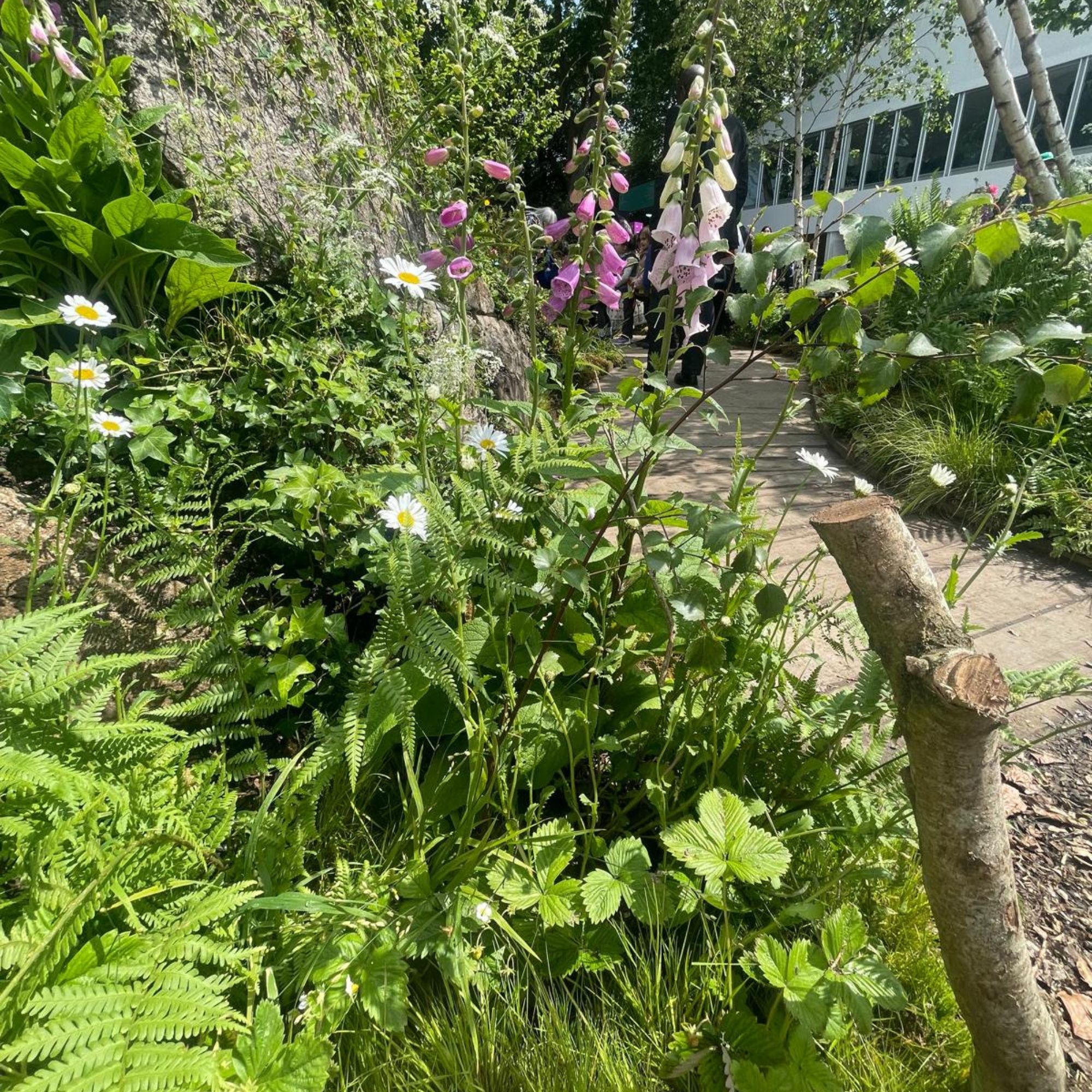Alpine strawberries are the unexpected 'it' plant of the Chelsea Flower Show – here's how to grow the newest cottage garden staple
Compact, hardy, and easy? Here's how to grow alpine strawberries


It’s official: alpine strawberries – one of the most underrated perennials around – are finally having their moment, thanks to a star turn at this year’s RHS Chelsea Flower Show.
That’s right – while it’s easy to get swept away by the jaw-dropping designs on display at the UK’s biggest garden event (anyone else now dreaming of their very own Japanese tea garden?), there are ways to recreate a little Chelsea magic at home.
One of the easiest? Take inspiration from the plants themselves – especially when they’re a cheery cottage garden classic that’s practically unkillable once it’s in the ground.
How to grow alpine strawberries
Alpine strawberries, by their very nature, are small and low-growing, which meant they blended seamlessly into the designs of Zoe Claymore’s British Rainforest Garden and Nicola Oakey’s Songbird Survival Garden at RHS Chelsea 2025.
'I’ve actually put alpine strawberries in all of my show gardens so far because they’re absolutely fantastic little jewels,' says Zoe, who was awarded a prestigious Silver Gilt Medal at this year’s event.

Zoe Claymore is a multi award-winning garden designer based in London. She focuses on creating outdoor places with emotional connection and ecological integrity for her private and commercial clients.
'I think they’re trending at RHS Chelsea because they’re such fun, versatile, and exciting fruits,' she continues, noting that there aren’t many fruits in the UK that thrive in shade.
'Once you’ve propagated these gorgeous pockets of joy, they’re quite easy to grow and can happily take over as ground cover. And I’ve also planted them in my show garden because it means I can eat them during the week while I’m here!'
Sign up to our newsletter for style inspiration, real homes, project and garden advice and shopping know-how

Nicola, meanwhile, chose to include alpine strawberries in her own Silver Gilt-winning design, highlighting them as one of the best ground cover plants for a wildlife garden.
'The birds will eat the small strawberry fruits,' she says – a simple but powerful reason to give them space in nature-focused planting schemes.

No surprise, then, that there’s been a 260% surge in searches for alpine strawberries over the past three months.
'With gardeners being much more aware of the need for more naturalistic planting, it doesn't surprise me that alpine strawberries have grown in popularity and are being used in more gardens/landscape designs,' says Morris Hankinson, director of Hopes Grove Nurseries.

Morris Hankinson is the founder and managing director of Hopes Grove Nurseries Ltd, the UK’s only specialist grower-retailer of hedging plants. He established the thriving business in 1992, shortly after graduating with a Commercial Horticulture Degree from Writtle College, Essex.
'Alpine strawberries (aka wild strawberries) are native, so they provide food for wildlife over a long period,' he continues.
'The flowers are loved by bees and pollinators, and the small fruits are a great source of food for wildlife, from slugs to birds. The flowers and small fruits are pretty, too, which adds a lovely visual to the garden. And, bonus, we can eat them if we like!'
All in all, an excellent array of reasons to try planting alpine strawberries in your own garden. So, how best to bring the unexpected 'it' plant of RHS Chelsea to life at home?
What you'll need
Growing alpine strawberries is surprisingly simple; all you really need is a container or garden border in full sun to partial shade, and filled with slightly acidic soil that's been enriched with plenty of compost.
You will also, of course, need the fruiting plants themselves...
- Crocus: try the Fragaria Vesca seeds
- Thompson & Morgan: the Woodland Strawberry Seeds are perfect for summer fruits
- Amazon: Go for the more unusual alpine strawberries 'white soul'.
Step-by-step guide
Once you've stocked up on the necessities for growing alpine strawberries, all that's left to do is set to work planting them.
1. Prep and plant
The No-Dig Movement remains one of the easiest ways to grow your own vegetables, fruit, herbs, and flowers, so it stands to reason it works for alpine strawberries, too.
To do it justice, you need to mulch the ground, lay compost or manure in beds on top of it, and plant accordingly. Otherwise, you can plant in the traditional way, but it's a good idea to enrich the soil before you begin planting.

'Even though they’re small, I give each plant a bit of breathing room – about 20–30cm apart,' says Christopher O'Donoghue of Gardens Revived.
'That way they’ve got space to spread gently and fill in as ground cover without getting overcrowded.'
2. Water them in well
Once your alpine strawberries are in the ground, Christopher recommends you give them a thorough watering to help them settle.
'I keep an eye on them during dry spells, especially in the first few weeks,' he says. 'They’re hardy, but young plants like a little TLC while they get established.'
3. Get mulching
To help lock in moisture and keep the weeds down, it's a good idea to mulch your alpine strawberries with some straw or leaf mould.
'This also stops the fruits from sitting directly on the soil, which helps keep them clean and reduces rot, especially during a damp UK summer,' says Christopher.
4. Let them do their thing
Honestly, once they’re in, alpine strawberries are pretty self-sufficient.
'You don’t need to net them or fuss too much, although it's a good idea to remove excess runners,' says Christopher.
'Personally, I’ll tidy up any tired leaves, keep the patch lightly weeded, and enjoy eating the occasional sweet little berry as they ripen – often right through to autumn – although I prefer to leave most to local wildlife.'
FAQs
Is it worth growing alpine strawberries?
It is absolutely worth growing alpine strawberries, particularly if you're looking for a perennial that requires minimal space and input.
'Great for organic gardens and permaculture enthusiasts, their delicate look fits with the romanticised, nature-inspired gardening trends seen on platforms like Instagram and Pinterest,' says Christopher O'Donoghue of Gardens Revived.
'They're easy edimentals, basically, and much more tolerant of shade and erratic weather than traditional strawberries, too, which makes them well-suited to the UK’s changing climate.'
Can you eat alpine strawberries?
Wondering if you can eat alpine strawberries? We have good news; these hardy woodland plants 'produce small, fragrant, intensely flavoured berries,' promises Christopher O'Donoghue of Gardens Revived.
That being said, it's a great idea to leave these perennials for songbirds and other wildlife to nibble on; they provide a great source of natural food and shelter, not to mention look beautiful dotted around shady spots.
And just like that, you know how to grow alpine strawberries. Time to set to work and transform your own patch of land into an RHS Chelsea-inspired paradise, we think...

Kayleigh Dray became Ideal Home’s Acting Content Editor in the spring of 2023, and is very excited to get to work. She joins the team after a decade-long career working as a journalist and editor across a number of leading lifestyle brands, both in-house and as a freelancer.
You must confirm your public display name before commenting
Please logout and then login again, you will then be prompted to enter your display name.